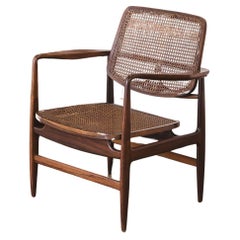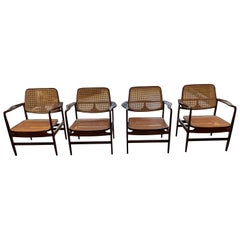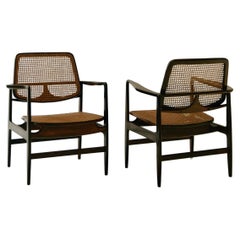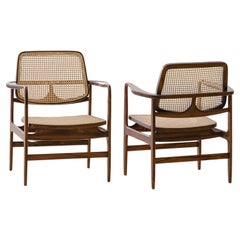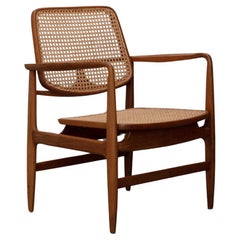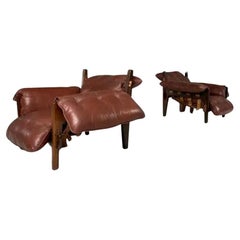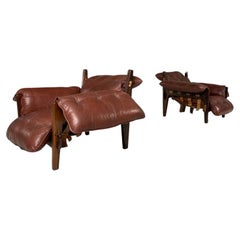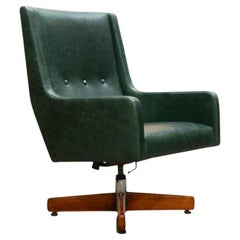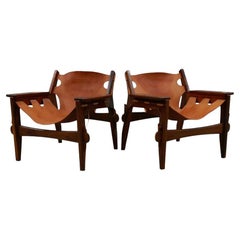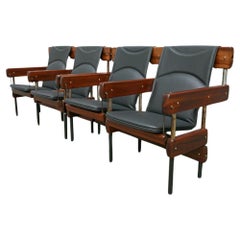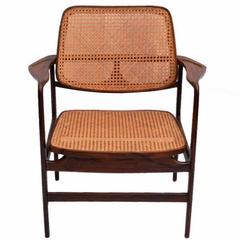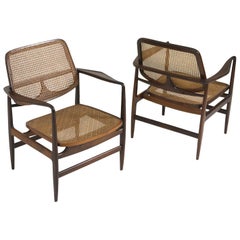Oscar Armchairs By Sergio Rodrigues
Vintage 1960s British Mid-Century Modern Armchairs
Cane, Wood
Vintage 1960s British Mid-Century Modern Armchairs
Cane, Wood
Vintage 1960s British Mid-Century Modern Armchairs
Cane, Wood
Vintage 1950s Brazilian Mid-Century Modern Chairs
Cane, Wood
Vintage 1950s Brazilian Mid-Century Modern Armchairs
Straw, Rosewood
Mid-20th Century Brazilian Armchairs
Cane, Rosewood
Vintage 1960s Brazilian Mid-Century Modern Armchairs
Leather, Rosewood
Vintage 1960s Brazilian Mid-Century Modern Armchairs
Leather, Rosewood
20th Century Brazilian Mid-Century Modern Armchairs
Chrome
20th Century Brazilian Mid-Century Modern Armchairs
Leather, Hardwood
Mid-20th Century Brazilian Mid-Century Modern Armchairs
Iron
Mid-20th Century Brazilian Mid-Century Modern Benches
Hardwood
Mid-20th Century Brazilian Mid-Century Modern Dining Room Tables
Hardwood
Vintage 1950s Brazilian Mid-Century Modern Stools
Imbuia
Mid-20th Century Brazilian Mid-Century Modern Credenzas
Hardwood
Mid-20th Century Brazilian Mid-Century Modern Chairs
Leather, Hardwood
Mid-20th Century Brazilian Mid-Century Modern Dining Room Chairs
Leather, Hardwood
Mid-20th Century Brazilian Mid-Century Modern Dining Room Chairs
Hardwood, Ultrasuede
Vintage 1960s Brazilian Mid-Century Modern Desks and Writing Tables
Rosewood
Mid-20th Century Mid-Century Modern Carts and Bar Carts
Glass, Hardwood
Mid-20th Century Brazilian Mid-Century Modern Sofas
Fabric, Hardwood
Mid-20th Century Brazilian Mid-Century Modern Dining Room Tables
Metal
Mid-20th Century Brazilian Mid-Century Modern Side Tables
Chrome
Vintage 1960s Brazilian Lounge Chairs
Fabric, Hardwood
Mid-20th Century Brazilian Mid-Century Modern Dining Room Chairs
Fabric, Hardwood
Vintage 1960s Brazilian Mid-Century Modern Sofas
Rosewood, Fabric
Vintage 1970s Brazilian Mid-Century Modern Armchairs
Leather
Recent Sales
Mid-20th Century Brazilian Mid-Century Modern Armchairs
Cane, Wood
Vintage 1950s Brazilian Mid-Century Modern Chairs
Cane, Wood
Mid-20th Century Brazilian Mid-Century Modern Armchairs
Natural Fiber, Hardwood
Vintage 1950s Brazilian Mid-Century Modern Armchairs
Cane, Rosewood
Vintage 1950s Brazilian Mid-Century Modern Armchairs
Cane, Wood
Mid-20th Century Brazilian Mid-Century Modern Armchairs
Rosewood
Mid-20th Century Brazilian Mid-Century Modern Desks and Writing Tables
Hardwood
Mid-20th Century Brazilian Mid-Century Modern Dining Room Chairs
Fabric, Hardwood
Mid-20th Century Brazilian Mid-Century Modern Stools
Cane, Hardwood
Mid-20th Century Brazilian Mid-Century Modern Credenzas
Hardwood
Mid-20th Century Brazilian Mid-Century Modern Stools
Leather, Hardwood
Mid-20th Century Brazilian Mid-Century Modern Dining Room Chairs
Leather, Hardwood
Mid-20th Century Brazilian Mid-Century Modern Coffee and Cocktail Tables
Hardwood, Glass
Mid-20th Century Italian Mid-Century Modern Lounge Chairs
Leather, Jacaranda
Vintage 1950s Brazilian Mid-Century Modern Armchairs
Metal
Vintage 1970s Brazilian Mid-Century Modern Armchairs
Leather, Hardwood
Vintage 1950s Brazilian Mid-Century Modern Armchairs
Straw, Rosewood
Vintage 1950s Brazilian Mid-Century Modern Armchairs
Rosewood, Cane
Vintage 1950s Brazilian Mid-Century Modern Armchairs
Cane, Rosewood
Vintage 1950s Brazilian Mid-Century Modern Armchairs
Cane, Rosewood
Vintage 1950s Brazilian Mid-Century Modern Chairs
Cane, Wood
Vintage 1950s Brazilian Mid-Century Modern Chairs
Wood, Cane
Vintage 1950s Brazilian Mid-Century Modern Chairs
Cane, Wood
Early 2000s Brazilian Modern Armchairs
Hardwood
Mid-20th Century Brazilian Mid-Century Modern Benches
Hardwood
Vintage 1960s Brazilian Mid-Century Modern Lounge Chairs
Leather, Teak
Mid-20th Century Brazilian Mid-Century Modern Lounge Chairs
Leather
Vintage 1950s Brazilian Armchairs
Vintage 1950s Brazilian Armchairs
Cane, Jacaranda
Vintage 1950s Brazilian Armchairs
Jacaranda
Vintage 1950s Brazilian Armchairs
Mid-20th Century Brazilian Mid-Century Modern Armchairs
20th Century Brazilian Armchairs
Vintage 1950s Brazilian Mid-Century Modern Chairs
Leather, Jacaranda
Vintage 1960s Brazilian Mid-Century Modern Benches
Rosewood
Vintage 1950s Brazilian Mid-Century Modern Chairs
Leather, Jacaranda
People Also Browsed
21st Century and Contemporary Portuguese Modern Sofas
Velvet, Walnut
21st Century and Contemporary Mexican Mid-Century Modern Table Lamps
Fiberglass, Linen, Fabric, Wood
2010s South African Minimalist Pedestals
Hardwood
21st Century and Contemporary Portuguese Organic Modern Center Tables
Travertine
2010s Italian Modern Chaise Longues
Leather, Wood
2010s American Modern Stools
Wood, Oak
Mid-20th Century Brazilian Mid-Century Modern Side Tables
Marble
Vintage 1960s Brazilian Mid-Century Modern Side Chairs
Leather, Walnut
Vintage 1960s Brazilian Mid-Century Modern Lounge Chairs
Leather, Hardwood
21st Century and Contemporary Italian Organic Modern Dining Room Tables
Travertine, Marble
2010s American Modern Chandeliers and Pendants
Brass
21st Century and Contemporary Portuguese Cabinets
Brass
21st Century and Contemporary Portuguese Organic Modern Center Tables
Marble
21st Century and Contemporary Italian Modern Coffee and Cocktail Tables
Blown Glass
Vintage 1960s Brazilian Mid-Century Modern Lounge Chairs
Leather, Wood
21st Century and Contemporary Italian Mid-Century Modern Dining Room Tables
Travertine
Oscar Armchairs By Sergio Rodrigues For Sale on 1stDibs
How Much are Oscar Armchairs By Sergio Rodrigues?
Sergio Rodrigues for sale on 1stDibs
The prolific architect and designer Sergio Rodrigues is often called the "father of modern Brazilian design," but it is the second adjective in that phrase that deserves emphasis: Rodrigues’s great achievement was to create furniture in a style that captured the spirit, character and personality of his country.
Modernity came slowly to 20th-century Brazil, politically and culturally. The nation finally realized genuine constitutional democracy in 1945, ushering in a new, progressive era in the arts. More often than not, the luxurious furnishings of that time and place, with their gleaming wood, soft leathers and inviting shapes, share a sensuous, uniquely Brazilian quality that distinguishes them from the more rectilinear output of American mid-century modernists and Scandinavian makers of the same era. Until that time in Brazil, heavy furniture based on historical European models had been the norm.
In the late 1940s, designer Joaquim Tenreiro introduced sleek, minimalist chairs and cabinets; José Zanine Caldas, now best known for his later artisanal work, created plywood furnishings for mass production; the Italian architect Lina Bo Bardi, a former editor for the Gio Ponti-founded magazine Domus — and a furniture designer with talent, imagination and a social conscience — set up shop in São Paulo, designing elegant, flexible chairs set on slim metal frames.
This was the heady scene into which Rodrigues, the son of an artistically prominent Rio de Janeiro family, arrived after graduating in 1952 from the national university. He moved to Curitiba and helped establish the furniture manufacturer Móveis Artesanal with Italian designer Carlo Hauner and Austrian architect Martin Eisler — as well as Carlo’s brother Ernesto Hauner — which eventually rebranded as Forma. Later, Rodrigues relocated to Rio de Janeiro where he founded Oca in 1955, a company that would become the preeminent maker and retailer of modernist furniture in Brazil.
When architects Lúcio Costa and Oscar Niemeyer were tasked in 1956 with the whirlwind project to plan, design and build the new capital, Brasília, in five years, they used Rodrigues’s early chairs, with their softly-contoured lines and caned seats and backrests, to furnish many of the buildings.
Rodrigues would realize the true expression of his talents in — and garner international awards and acclaim with — his Mole chair of 1957. The word mole means "soft" in Portuguese, but can be interpreted as "easygoing" or even "listless." The chair, which is also known as the Sheriff chair, features a sturdy, generously proportioned frame of the native South American hardwood jacaranda, upholstered with overstuffed leather pads that flap like saddlebags across the arms, seat, and backrest.
Rodrigues's Mole chair invites sprawling — perfect for the social milieu of the bossa nova and caipirinha cocktails; where a languorous afternoon spent chatting and joking is the apex of enjoyment. The seat won first prize at the IV Concorso Internazionale del Mobile in Cantù, Italy, in 1961, and ISA Bergamo acquired the rights to manufacture a modified version of Rodrigues’s original design.
In 1963, Rodrigues established a shop called Meia-Pataca, which sold simpler and more affordable furniture he had designed, such as his Tonico seating, which was intended for student housing.
Most of the estimated 1,200 armchairs, sofas, tables, storage cabinets and dining tables Rodrigues created in his long career are imbued, in one way or another, with the air of robust relaxation that defines the Mole chair. He was a designer who was true to the temperament of his people.
Find vintage Sergio Rodrigues furniture for sale on 1stDibs.
A Close Look at Mid-century Modern Furniture
Organically shaped, clean-lined and elegantly simple are three terms that well describe vintage mid-century modern furniture. The style, which emerged primarily in the years following World War II, is characterized by pieces that were conceived and made in an energetic, optimistic spirit by creators who believed that good design was an essential part of good living.
ORIGINS OF MID-CENTURY MODERN FURNITURE DESIGN
- Emerged during the mid-20th century
- Informed by European modernism, Bauhaus, International style, Scandinavian modernism and Frank Lloyd Wright’s architecture
- A heyday of innovation in postwar America
- Experimentation with new ideas, new materials and new forms flourished in Scandinavia, Italy, the former Czechoslovakia and elsewhere in Europe
CHARACTERISTICS OF MID-CENTURY MODERN FURNITURE DESIGN
- Simplicity, organic forms, clean lines
- A blend of neutral and bold Pop art colors
- Use of natural and man-made materials — alluring woods such as teak, rosewood and oak; steel, fiberglass and molded plywood
- Light-filled spaces with colorful upholstery
- Glass walls and an emphasis on the outdoors
- Promotion of functionality
MID-CENTURY MODERN FURNITURE DESIGNERS TO KNOW
- Charles and Ray Eames
- Eero Saarinen
- Milo Baughman
- Florence Knoll
- Harry Bertoia
- Isamu Noguchi
- George Nelson
- Danish modernists Hans Wegner and Arne Jacobsen, whose emphasis on natural materials and craftsmanship influenced American designers and vice versa
ICONIC MID-CENTURY MODERN FURNITURE DESIGNS
- Eames lounge chair
- Nelson daybed
- Florence Knoll sofa
- Egg chair
- Womb chair
- Noguchi coffee table
- Barcelona chair
VINTAGE MID-CENTURY MODERN FURNITURE ON 1STDIBS
The mid-century modern era saw leagues of postwar American architects and designers animated by new ideas and new technology. The lean, functionalist International-style architecture of Le Corbusier and Bauhaus eminences Ludwig Mies van der Rohe and Walter Gropius had been promoted in the United States during the 1930s by Philip Johnson and others. New building techniques, such as “post-and-beam” construction, allowed the International-style schemes to be realized on a small scale in open-plan houses with long walls of glass.
Materials developed for wartime use became available for domestic goods and were incorporated into mid-century modern furniture designs. Charles and Ray Eames and Eero Saarinen, who had experimented extensively with molded plywood, eagerly embraced fiberglass for pieces such as the La Chaise and the Womb chair, respectively.
Architect, writer and designer George Nelson created with his team shades for the Bubble lamp using a new translucent polymer skin and, as design director at Herman Miller, recruited the Eameses, Alexander Girard and others for projects at the legendary Michigan furniture manufacturer.
Harry Bertoia and Isamu Noguchi devised chairs and tables built of wire mesh and wire struts. Materials were repurposed too: The Danish-born designer Jens Risom created a line of chairs using surplus parachute straps for webbed seats and backrests.
The Risom lounge chair was among the first pieces of furniture commissioned and produced by celebrated manufacturer Knoll, a chief influencer in the rise of modern design in the United States, thanks to the work of Florence Knoll, the pioneering architect and designer who made the firm a leader in its field. The seating that Knoll created for office spaces — as well as pieces designed by Florence initially for commercial clients — soon became desirable for the home.
As the demand for casual, uncluttered furnishings grew, more mid-century furniture designers caught the spirit.
Classically oriented creators such as Edward Wormley, house designer for Dunbar Inc., offered such pieces as the sinuous Listen to Me chaise; the British expatriate T.H. Robsjohn-Gibbings switched gears, creating items such as the tiered, biomorphic Mesa table. There were Young Turks such as Paul McCobb, who designed holistic groups of sleek, blond wood furniture, and Milo Baughman, who espoused a West Coast aesthetic in minimalist teak dining tables and lushly upholstered chairs and sofas with angular steel frames.
Generations turn over, and mid-century modern remains arguably the most popular style going. As the collection of vintage mid-century modern chairs, dressers, coffee tables and other furniture for the living room, dining room, bedroom and elsewhere on 1stDibs demonstrates, this period saw one of the most delightful and dramatic flowerings of creativity in design history.
On the Origins of Brazil
More often than not, vintage mid-century Brazilian furniture designs, with their gleaming wood, soft leathers and inviting shapes, share a sensuous, unique quality that distinguishes them from the more rectilinear output of American and Scandinavian makers of the same era.
Commencing in the 1940s and '50s, a group of architects and designers transformed the local cultural landscape in Brazil, merging the modernist vernacular popular in Europe and the United States with the South American country's traditional techniques and indigenous materials.
Key mid-century influencers on Brazilian furniture design include natives Oscar Niemeyer, Sergio Rodrigues and José Zanine Caldas as well as such European immigrants as Joaquim Tenreiro, Jean Gillon and Jorge Zalszupin. These creators frequently collaborated; for instance, Niemeyer, an internationally acclaimed architect, commissioned many of them to furnish his residential and institutional buildings.
The popularity of Brazilian modern furniture has made household names of these designers and other greats. Their particular brand of modernism is characterized by an émigré point of view (some were Lithuanian, German, Polish, Ukrainian, Portuguese, and Italian), a preference for highly figured indigenous Brazilian woods, a reverence for nature as an inspiration and an atelier or small-production mentality.
Hallmarks of Brazilian mid-century design include smooth, sculptural forms and the use of native woods like rosewood, jacaranda and pequi. The work of designers today exhibits many of the same qualities, though with a marked interest in exploring new materials (witness the Campana Brothers' stuffed-animal chairs) and an emphasis on looking inward rather than to other countries for inspiration.
Find a collection of vintage Brazilian furniture on 1stDibs that includes chairs, sofas, tables and more.
Finding the Right Seating for You
With entire areas of our homes reserved for “sitting rooms,” the value of quality antique and vintage seating cannot be overstated.
Fortunately, the design of side chairs, armchairs and other lounge furniture — since what were, quite literally, the early perches of our ancestors — has evolved considerably.
Among the earliest standard seating furniture were stools. Egyptian stools, for example, designed for one person with no seat back, were x-shaped and typically folded to be tucked away. These rudimentary chairs informed the design of Greek and Roman stools, all of which were a long way from Sori Yanagi's Butterfly stool or Alvar Aalto's Stool 60. In the 18th century and earlier, seats with backs and armrests were largely reserved for high nobility.
The seating of today is more inclusive but the style and placement of chairs can still make a statement. Antique desk chairs and armchairs designed in the style of Louis XV, which eventually included painted furniture and were often made of rare woods, feature prominently curved legs as well as Chinese themes and varied ornaments. Much like the thrones of fairy tales and the regency, elegant lounges crafted in the Louis XV style convey wealth and prestige. In the kitchen, the dining chair placed at the head of the table is typically reserved for the head of the household or a revered guest.
Of course, with luxurious vintage or antique furnishings, every chair can seem like the best seat in the house. Whether your preference is stretching out on a plush sofa, such as the Serpentine, designed by Vladimir Kagan, or cozying up in a vintage wingback chair, there is likely to be a comfy classic or contemporary gem for you on 1stDibs.
With respect to the latest obsessions in design, cane seating has been cropping up everywhere, from sleek armchairs to lounge chairs, while bouclé fabric, a staple of modern furniture design, can be seen in mid-century modern, Scandinavian modern and Hollywood Regency furniture styles.
Admirers of the sophisticated craftsmanship and dark woods frequently associated with mid-century modern seating can find timeless furnishings in our expansive collection of lounge chairs, dining chairs and other items — whether they’re vintage editions or alluring official reproductions of iconic designs from the likes of Hans Wegner or from Charles and Ray Eames. Shop our inventory of Egg chairs, designed in 1958 by Arne Jacobsen, the Florence Knoll lounge chair and more.
No matter your style, the collection of unique chairs, sofas and other seating on 1stDibs is surely worthy of a standing ovation.
